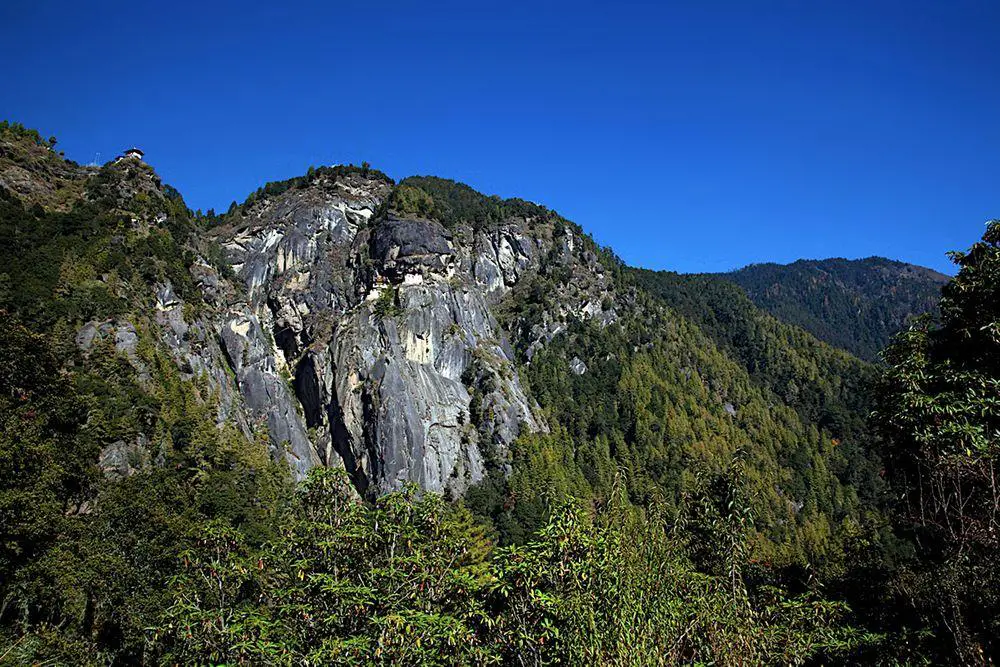Buddhist shrines 🢔 Religious architecture 🢔 Architectural wonders 🢔 Categories of wonders
Wonder
Paro Taktsang Monastery
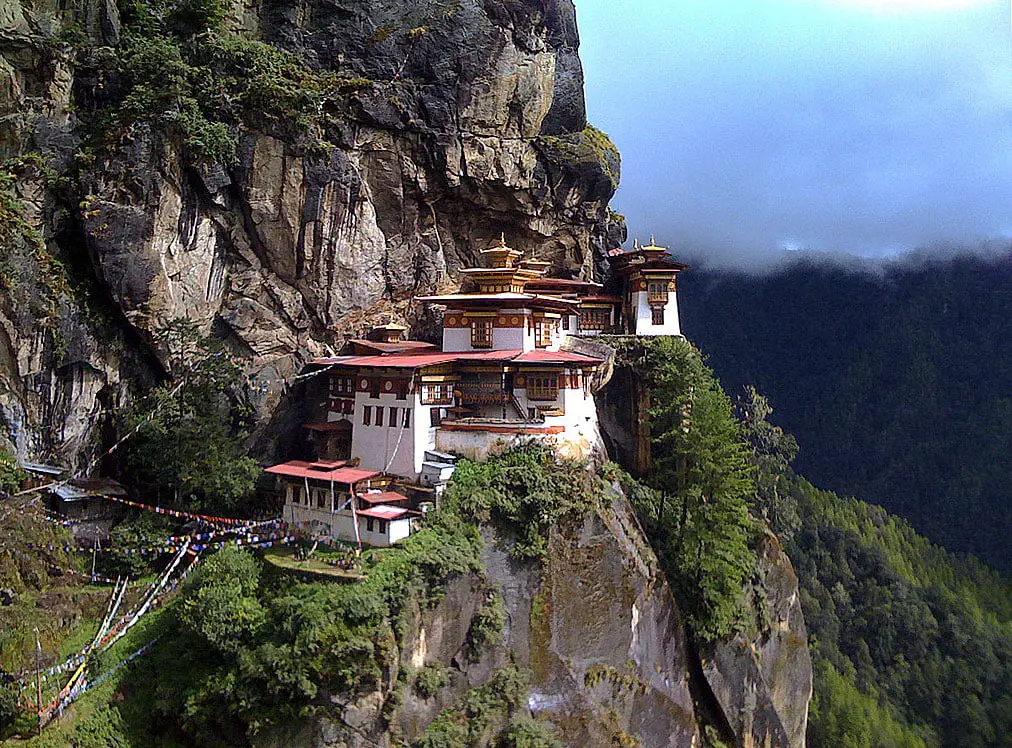
 In short
In short
One of the holiest places in Bhutan and even whole Himalaya is Paro Taktsang ("Tiger’s lair of Paro"). This amazing monastery is entwined with legends… or may be these miracles happened in reality?
 53.0%
53.0%
GPS coordinates
Alternate names
Founded
Religion
Map of the site
If you see this after your page is loaded completely, leafletJS files are missing.
 In detail
In detail
Coming of Second Buddha
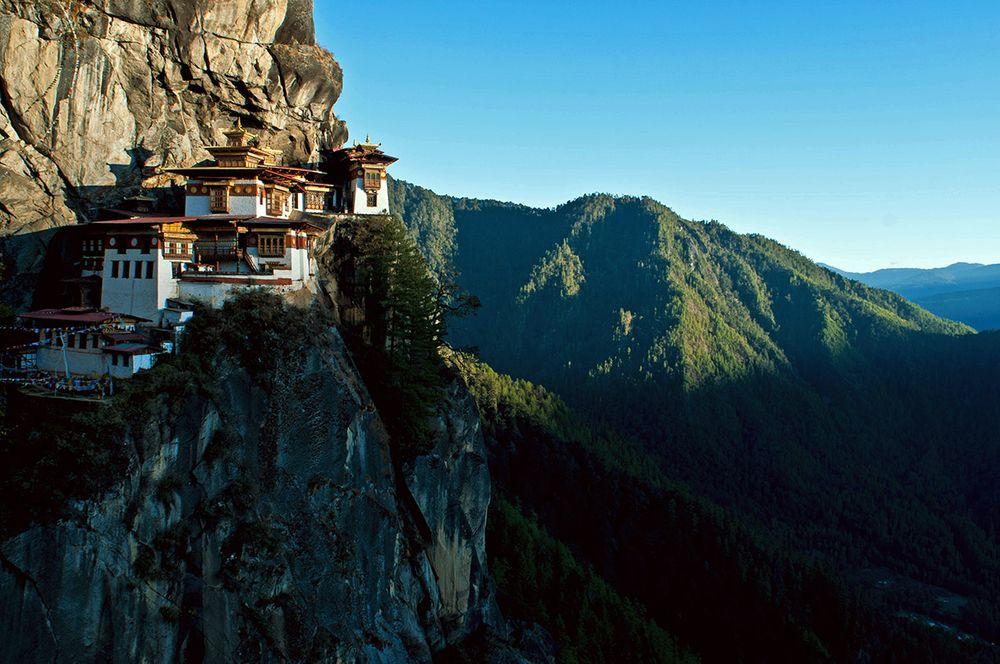
History of Bhutan changed in the 8th century when the legendary Guru Padmasambhava (Guru Rinpoche) arrived here from Tibet. This holy man arrived with style – he escaped from Tibet on the back of a tigress and stayed in a remote cave high in the cliffs of Paro valley. Padmasambhava meditated in this cave for three years, three months, three weeks, three days, and three hours. He introduced Buddhism in Bhutan (and also in Tibet).
Padmasambhava meditated in thirteen such tiger’s caves (taktsang) of Bhutan but Paro Taktsang is the best known.
The life of this legendary man was full of adventures and extraordinary feats. He died in Nepal – but his body miraculously returned to Paro Taktsang and, reportedly, is sealed in a room at the top of the entrance stairway. His followers believe that Padmasambhava is still alive and active – but in another form, as Rainbow Body. Padmasambhava is seen as the Second Buddha and a guardian spirit of Bhutan.
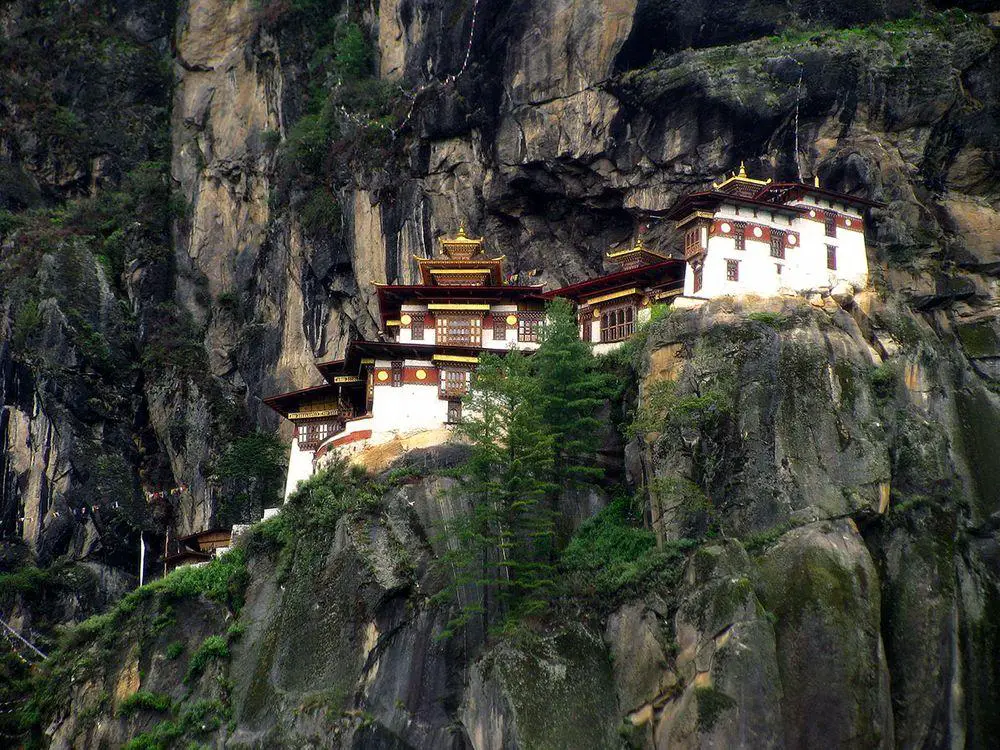
Since the death of Padmasambhava (or… is he dead?) local people and guests often saw religious symbols and figures of animals in the sky above the monastery. Once a shower of flowers happened – flowers appeared in the air from the rainbow, as if borne by the wind and disappeared in the air again.
Monastery
More and more monks looked for enlightenment in this holy place. The first sanctuary was built here in the 14th century – remnants of the paintings from this era still can be seen on the rock above the main building of the monastery.
Nevertheless only in 1692 there was laid fundament of the first large temple in front of one of the holy caves. Soon after was built a temple – a beautiful structure in a seemingly impossible location.
Monastery was built by another legendary personality – Gyalse Tenzin Rabgye, seen by many as a reincarnation of Padmasambhava. Since then this amazing structure has become a cultural icon of Bhutan.
In 1998 happened a tragedy: a fire in the main building of the monastery killed a monk and destroyed most buildings with unique cultural values – paintings, sculptures, and others. The monastery was meticulously renovated in 2005.
Paro Taktsang consists of four main temples and a group of residential shelters. All buildings are harmoniously adapted to the cliff surface, each has a balcony with fine views over the deep valley.
Monks who arrive here, stay in the monastery at least for three years, seldom leaving it.
Head Lama of monastery resides in the holiest of the caves – Phaphug Lakhang, the main shrine of Taktsang. In total here are eight holy caves, some are adorned with images of Bodhisattvas.
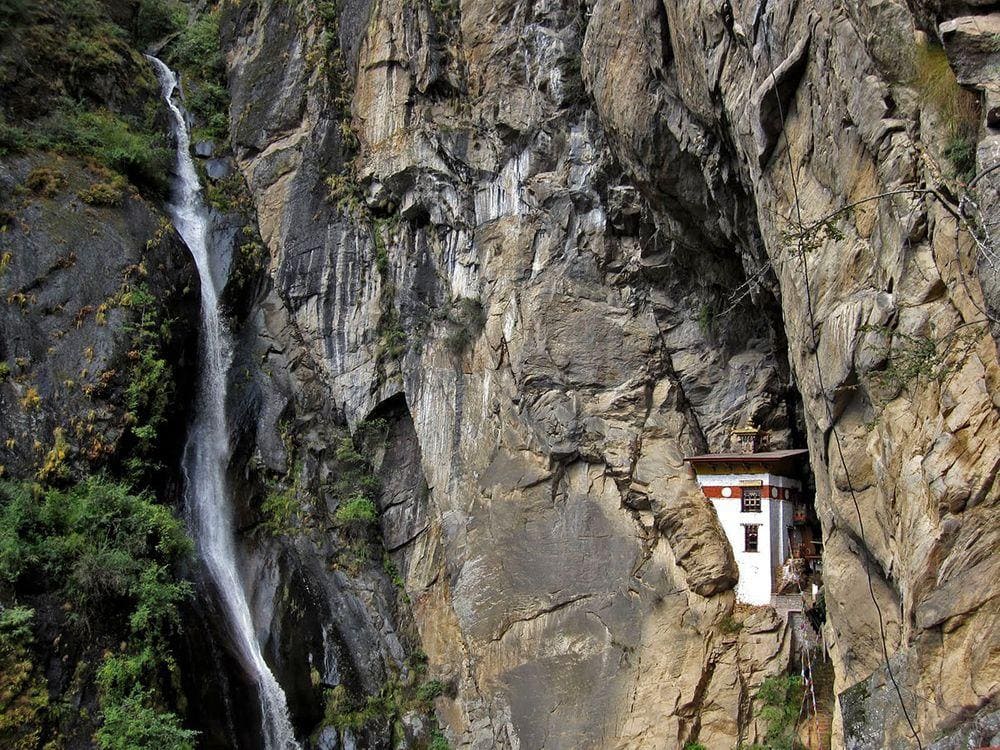
One of the main artifacts in the monastery is a painting of the "Copper-Coloured Mountain Paradise of Padmasambahva" – an artwork rich with symbolism and allegories.
Location
Paro Taktsang can be accessed from several directions. Temple itself is beautiful – but the access routes are not less amazing, leading through magnificent pine forest and breathtaking mountain scenery. One path near the monastery leads over a 60 m tall waterfall.
Monastery itself is located in a dramatic setting, perched on a high cliff some 900 m above Paro valley, 3,120 m above the sea level.
Although this is most desired tourist destination in Bhutan, Paro Taktsang is truly holy place, rich with history and traditions and surrounded by unspoilt nature.
 Linked articles
Linked articles
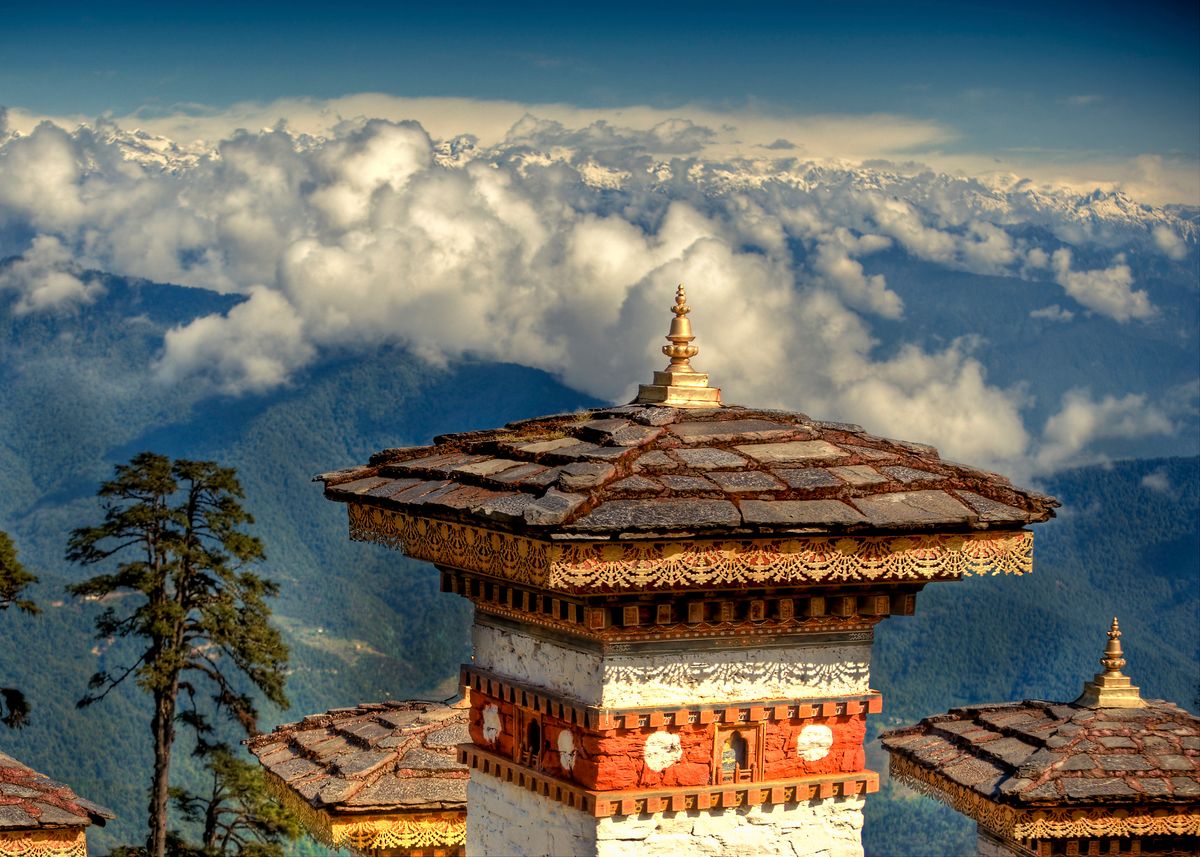
Wonders of Bhutan
Bhutan is an exotic country in the Himalayas, with an extremely well preserved natural heritage and rich, well-maintained local culture.
Nearly every place in Bhutan is beautiful with its countless tall waterfalls, unique ecosystems, and species – most of these are little known. The same can be said about prehistory: Bhutan has thousands of megaliths and scientists have not seen most of them.
Today the best-known landmarks in Bhutan are dzongs – unique buildings which serve as fortresses, Buddhist monasteries, and keepers of local culture and traditions. People maintain most of the dzongs very well up to this day.

Buddhist shrines
Buddhism is one of the world religions and at the same time is a spiritual philosophy with diverse traditions, beliefs, and practices. There exists a rich tradition of architecture expressed in Buddhist temples and monasteries.
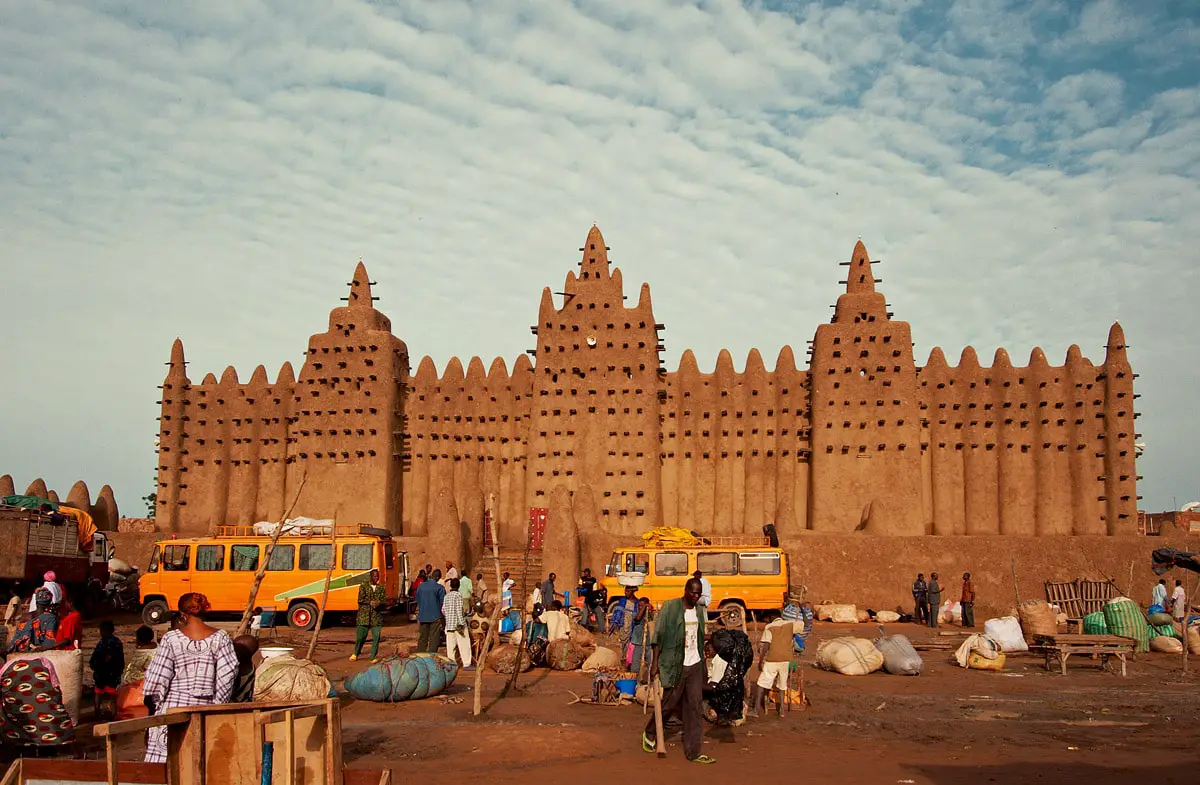
Religious architecture
Since ancient times human talents and skills have been expressed in religious architecture and arts, and traditions and rituals have evolved around pilgrimage sites. Religious buildings represent a major part of the highest achievements in architecture and crafts.
 Recommended books
Recommended books
Bhutan: The Land of Serenity
Tucked away between China and India in the heart of the Himalayas, Bhutan remains a uniquely distinct country. Few photographers have been granted permission to reside in this long-inaccessible kingdom, now a democracy, where life quietly unfolds to the rhythm of traditions amid the magnificent, unspoiled landscape.
The History of Bhutan
In 2008, Bhutan emerged as the world s youngest democracy and crowned the world s youngest monarch. Today, it continues to enchant the rest of the world with its policy of Gross National Happiness and has become a popular travel destination. But despite its growing popularity and the rising scholarly interest in the country, Bhutan remains one of the most poorly studied places on earth.

